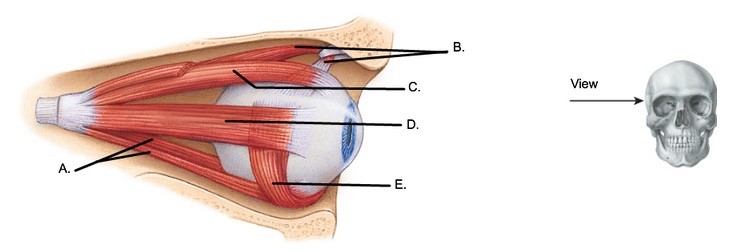Which joint permits the greatest range of motion of any joint in the body?
A) hip
B) shoulder
C) elbow
D) knee
E) ankle
B) shoulder
Anatomy & Physiology
You might also like to view...
The rounded elevations of the cerebrum that increase its surface area are called
A) sulci. B) fissures. C) cortical folds. D) gyri. E) dural sinuses.
Anatomy & Physiology
The septa of the lungs divide the lungs into
A) alveoli. B) lobules. C) bronchi. D) segments. E) lobes.
Anatomy & Physiology
This organ contains cells that are haploid.
A. heart B. liver C. lung D. testis
Anatomy & Physiology
 The figure illustrates a lateral view of the right eyeball. What does "E" represent?
The figure illustrates a lateral view of the right eyeball. What does "E" represent?
A. Superior oblique B. Lateral rectus C. Superior rectus D. Inferior oblique E. Inferior rectus
Anatomy & Physiology